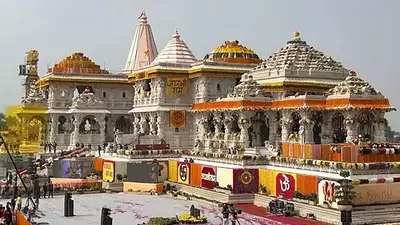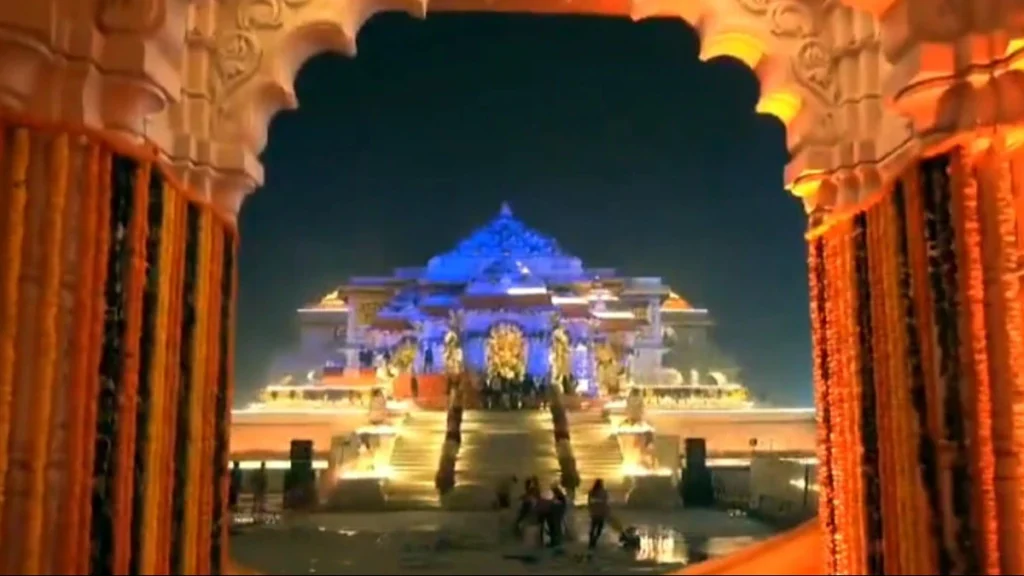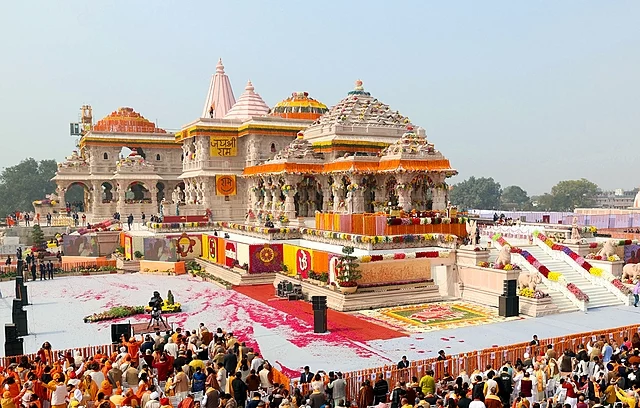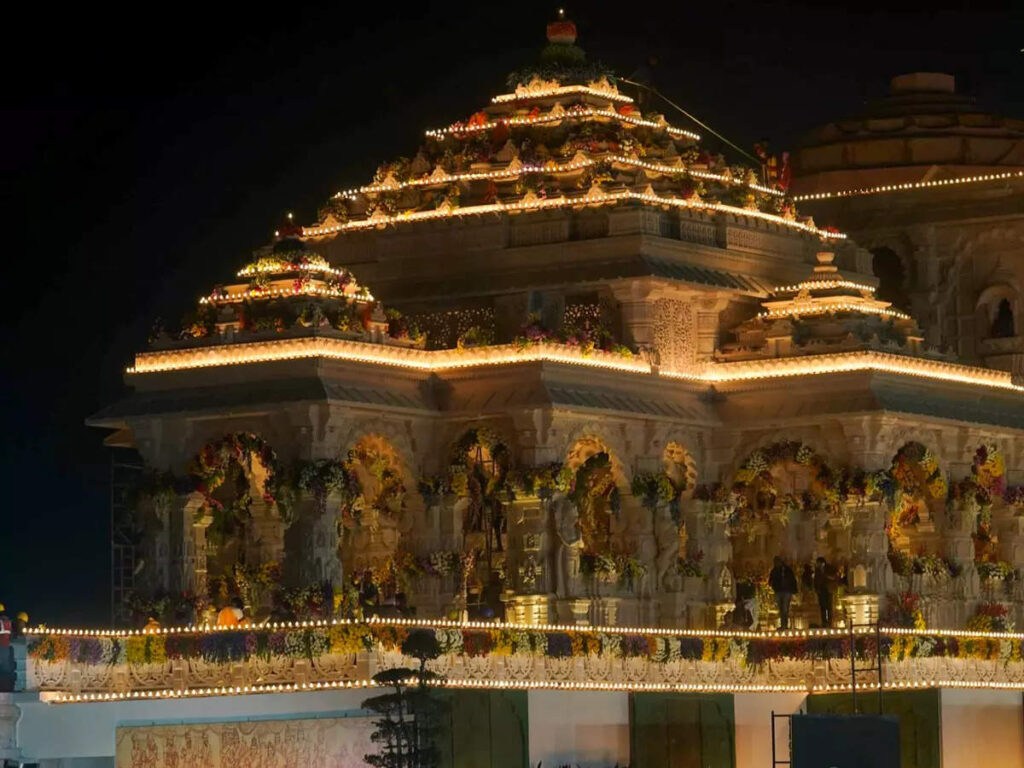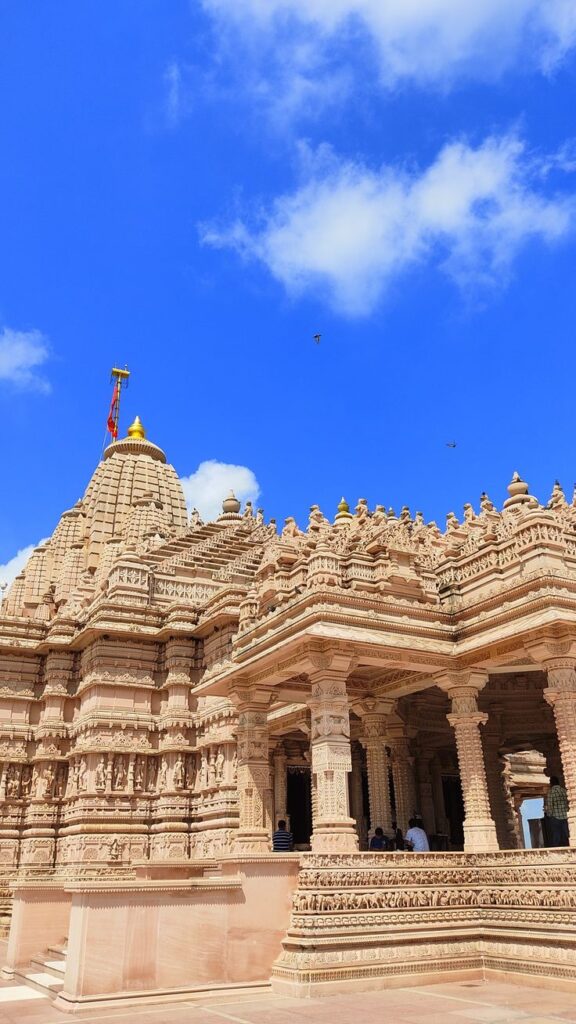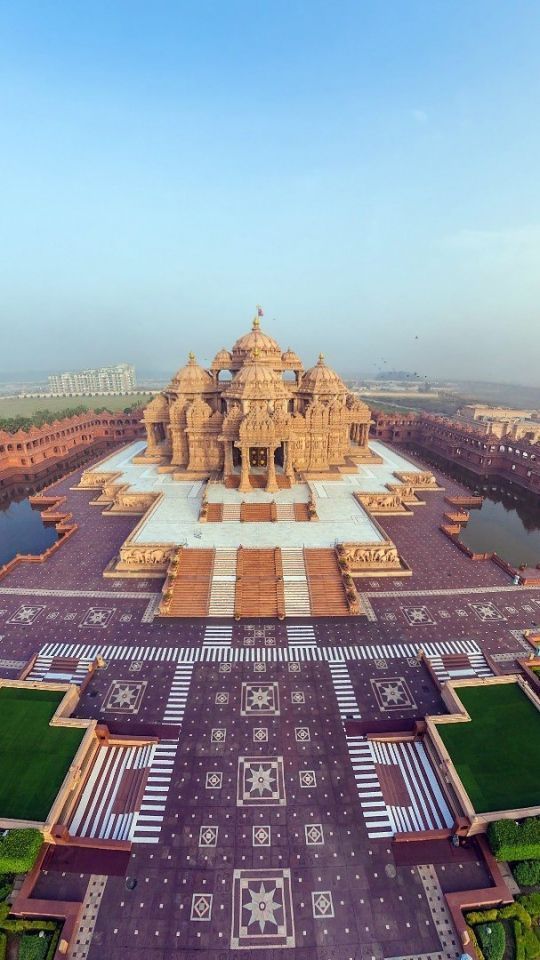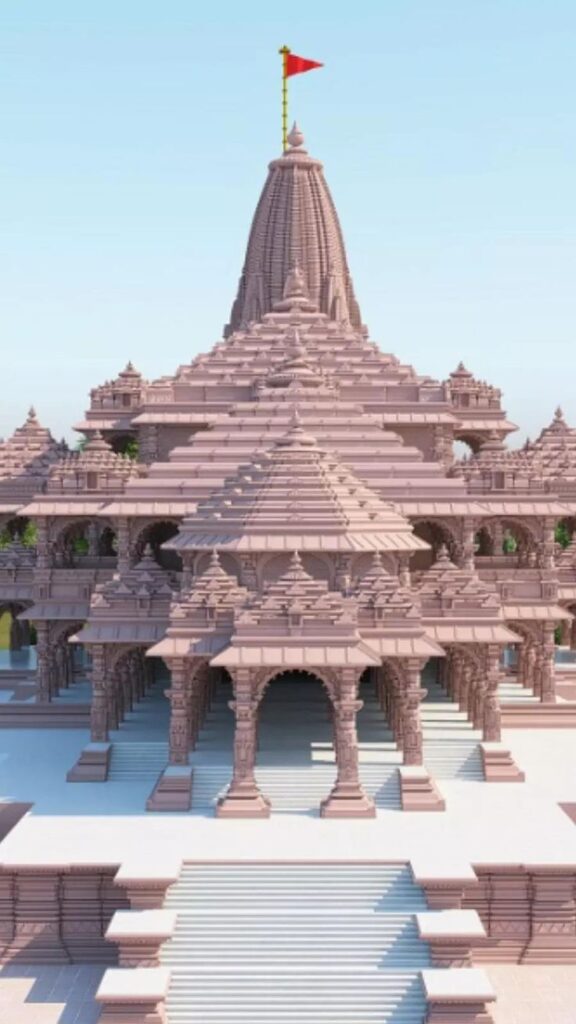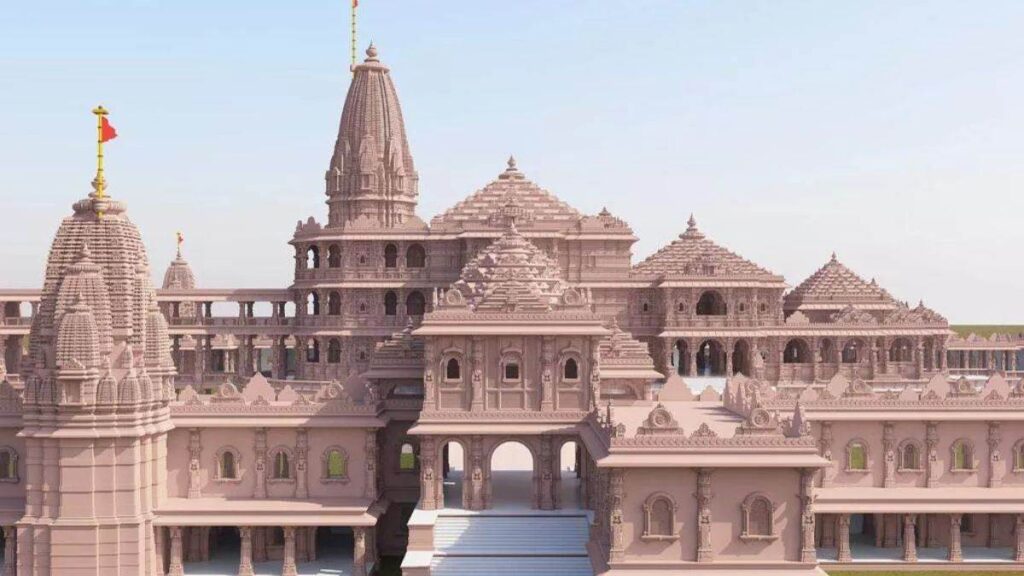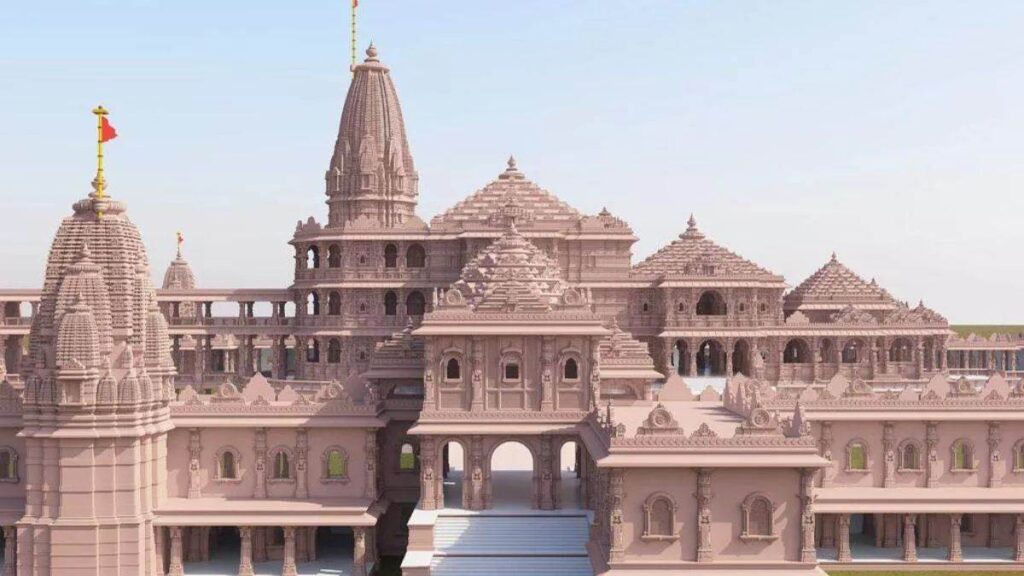
Ayodhya Ram Mandir – The Ayodhya Ram Temple, one of the largest temples constructed in India following independence, is hailed for fusing traditional Indian customs with cutting-edge technology.
Background of Ayodhya Ram Mandir:
The Mughal monarch Babur erected the Babri Masjid between 1528 and 1529. On the other hand, Hindus also claimed ownership of the location, stating that it was Lord Ram’s birthplace. After then, the location became contested, and a protracted legal conflict started. On November 9, 2019, the Supreme Court resolved the title dispute by recognizing the 2.77 acres of contested land as Lord Ram’s birthplace, opening the door for the Ram Mandir’s construction.
Stone-laying ceremony for the foundation of Ayodhya Ram Mandir Prime Minister Narendra Modi conducted the Bhumi Poojan ceremony and set the temple’s foundation stone on August 5, 2020, following the Supreme Court’s ruling.
Ayodhya Ram Mandir Made Up of
Pure white Rajasthan Makrana marble is used to construct the temple’s central structure. The beautiful idols of the gods have been carved out of Charmouthi sandstone from Karnataka. On the other side, the towering sculptures at the entrance gate are made of pink sandstone from Bansi Paharpur in Rajasthan. Karnataka is where the black stone used to make Lord Ram’s idol comes from. As portals to the divine realm, Arunachal Pradesh and Tripura have supplied handcrafted fabrics and elaborately carved wooden doors from their locations in the foothills of the Himalayas. Maharashtra is the supplier of polished teakwood, while Uttar Pradesh is the supply of brassware.
Ram Lalla Murti Made by which Stone
Bansi Paharpur Sandstone:
The rare pink marble stone known for its strength and beauty, Rajasthan Bansi Paharpur stone, will be cut to form the superstructure of the Ram Mandir. Four lakh square feet of stone would be needed in total.
The pink and red Bansi Paharpur Sandstone can be found in the Bayana Tehsil of the Bharatpur District in Rajasthan. In 2021, the center reversed the mining prohibition imposed in 2016 and granted in principle authority to turn 398 hectares of protected forest land into revenue land for the purpose of mining pink sandstone in the Band Baretha Wildlife Sanctuary in Bharatpur.
The nation’s magnificent buildings have been constructed using Bansi Pahadpur Sandstone. such as the Parliament Complex, the Lal Quila in Agra, and the Akshardham Temple. The Ram Mandir would be built without the use of bricks or steel.
Ram Lalla idol
There will be two Lord Ram idols. One will be the real idol, which has been in the tent for decades since being discovered in 1949. The other will be a massive statue that can be seen for a great distance.
Ram Lalla idol Made by Whom
A dark-coloured statue of Lord Ram carved by Arun Yogiraj has been selected for placement in the sanctum- sanatorium (garbha griha) of the Ayodhya Ram Mandir, the trust overseeing the construction work said on January 15. Eleven out of the fifteen members of the Ram Janmabhoomi Teerth Kshetra Trust voted in favor of the idol created by Yogiraj, an artist residing in Mysore, according to Secretary Champat Rai.
“A five-year-old child represents the idol of Lord Shri Ram Lalla. Rai informed them that the statue was 51 inches tall, beautifully crafted from black stone, and well-made. Rai continued, “The idol will be positioned on the ground floor of the three-story temple.”
Ayodhya Ram Mandir Cultural and Historical Significance:
For millions of Hindus, the building of the Ram Mandir is of great cultural and historical significance. Given that Lord Rama, a sacred figure in Hinduism, is thought to have been born in Ayodhya, the temple’s building satisfies a long-standing cultural desire.
Ayodhya Ram Mandir: Religious Unity and Harmony:
Some see the Ram Mandir’s completion as a representation of religious harmony and unity that highlights the harmonious coexistence of India’s diverse ethnicities. It’s a step toward settling old grudges and promoting understanding amongst people.
Ayodhya Ram Mandir Address:
Ayodhya Mandir राम, 25/5/45, Parikrama Marg, Karsewakpuram, Ayodhya, Uttar Pradesh 224123
Ayodhya Ram Mandir Location Google Map:
Ayodhya Ram Mandir Temple Timing:
Morning: 6.30 AM to 12.00 AM
Afternoon: 2.30 PM to 10.00 PM
This above-time subject change can change if as per the instructions of the trust
Ayodhya Ram Mandir Arti Timing:
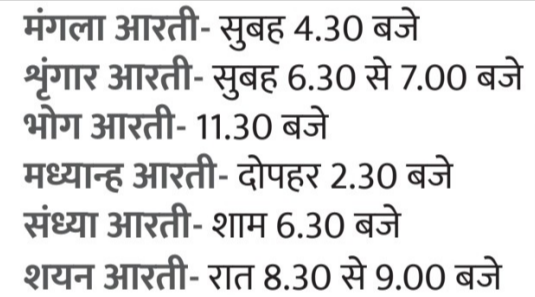
Ayodhya Ram Mandir distance from different cities:
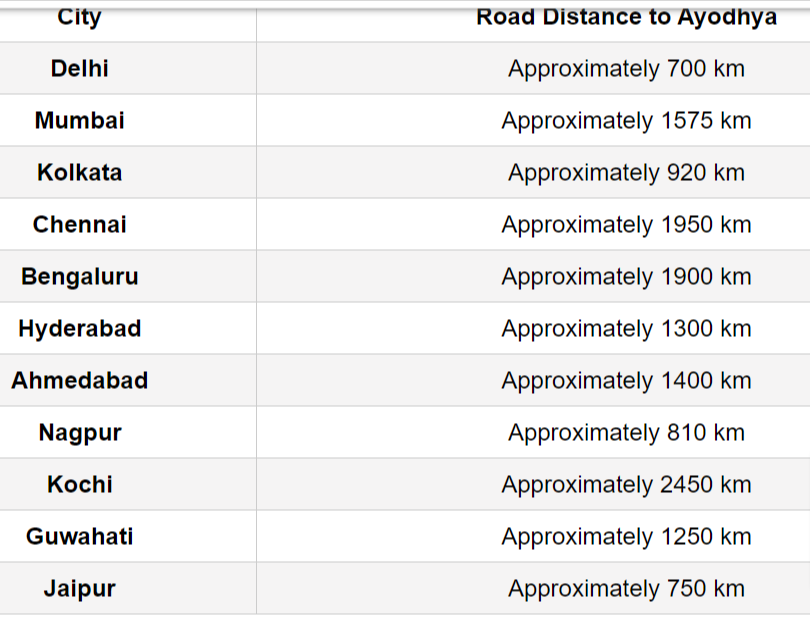
Ayodhya Ram Mandir Photos
